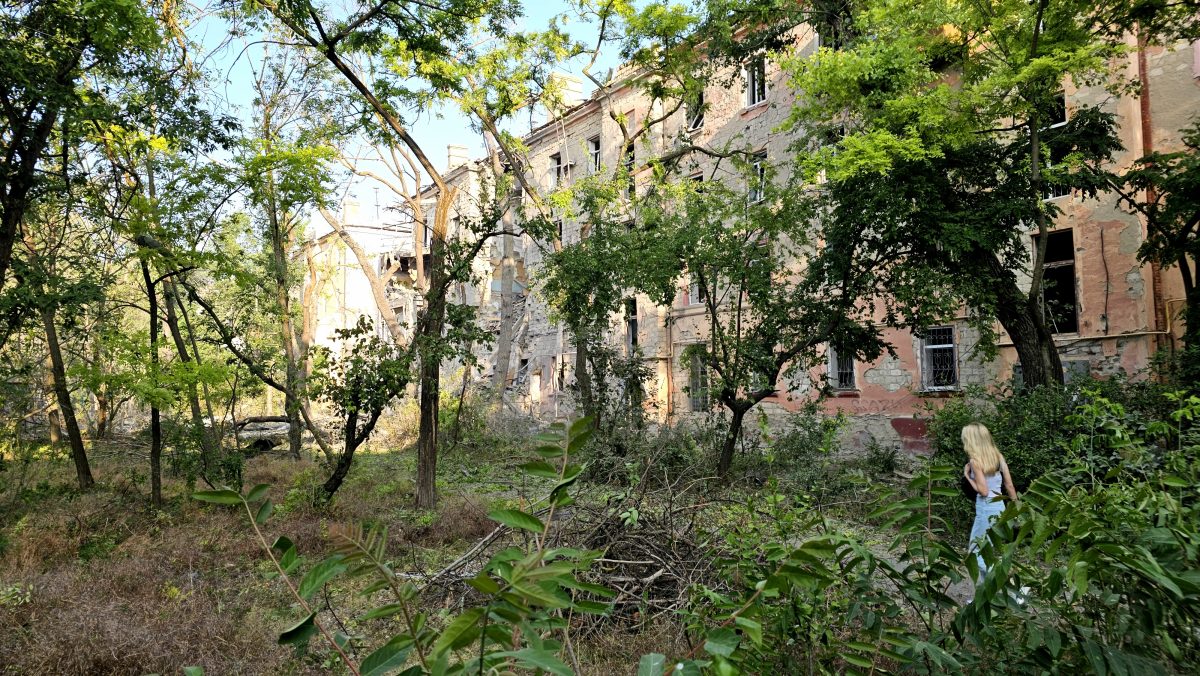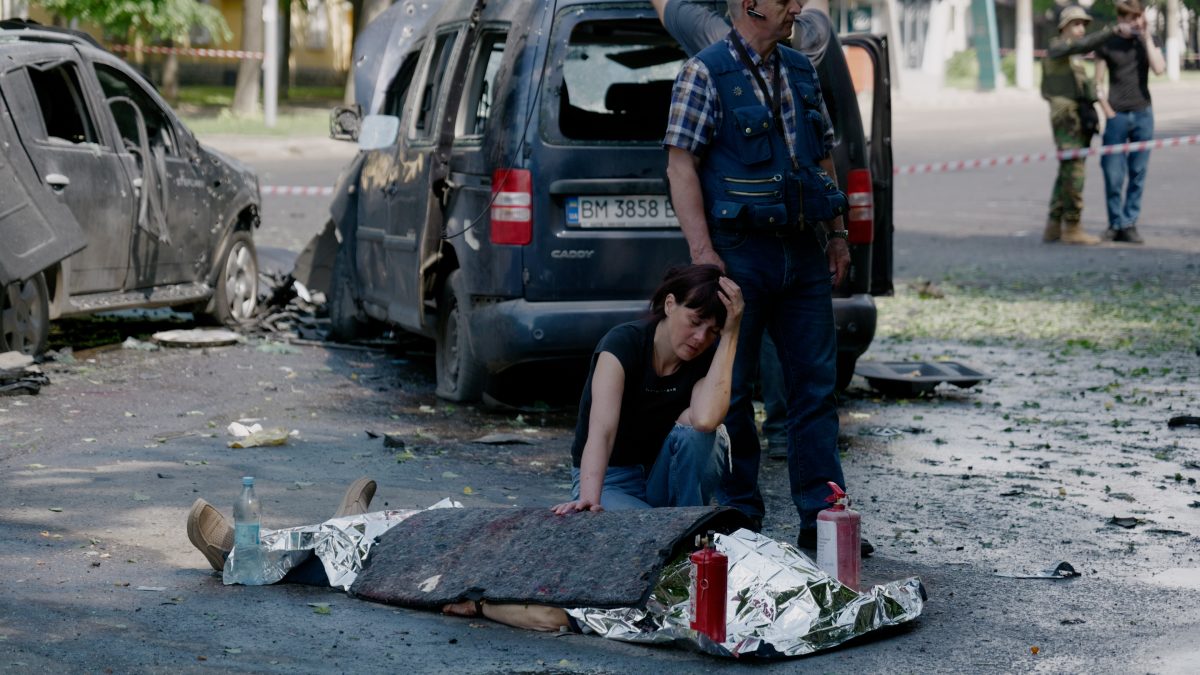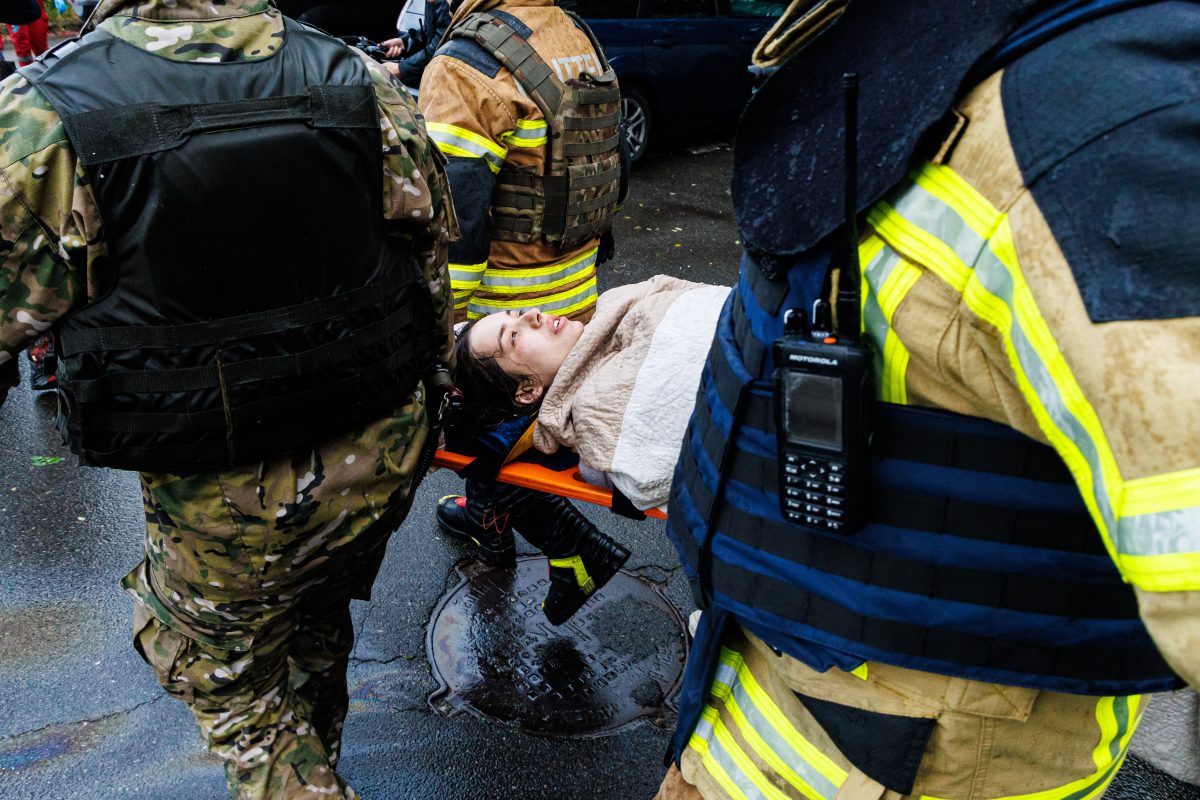The Week Russia Turned Ukraine’s Nights into a Weapon
It started like this: a mother pressing her hand to a taped window at 2:43 a.m., trying not to wake the child asleep on her shoulder. A buzz. A snap. Then the sky turned inside out.
Over the course of one week, the cities of Ukraine were thrust back into a nightmare that many hoped they had already survived. From June 1 to June 7, civilians across the country reported coordinated aerial and artillery attacks that unfolded with mechanical precision. Natalia in Kherson said it hit at 5:35 a.m. OSB boards blew off the walls. Valentyna in Lutsk hadn’t slept since 3 a.m. the Shaheds buzzed early. At 12:30 a.m. in Kharkiv, two thirteen-year-old girls barely made it out of a high-rise before it ruptured. And in Pryluky, a drone killed a patrol officer, her one-year-old son, and her mother in their family home.
This wasn’t random. It wasn’t tactical fog. It was pattern warfare, mapped out like sheet music.
Striking at the Nervous System
The psychological impact of Russia’s weeklong nocturnal assault campaign across Ukraine is not incidental, it’s strategic. From June 1 through June 7, waves of Shahed drones, ballistic missiles, and FPV strikes hit residential neighborhoods between midnight and dawn: 12:30 a.m. in Kharkiv, 5:35 a.m. in Kherson, 3 a.m. in Lutsk, and 5:29 a.m. in Pryluky. These were not merely attacks on infrastructure; they were engineered sleep disruptions, designed to grind the civilian nervous system into paralysis. Repeated drone buzzes followed by explosions; especially targeting children, mothers, and the elderly, create a state of hypervigilance, a clinical marker of complex PTSD.
According to the International Society for Traumatic Stress Studies (ISTSS), trauma exposure during sleep heightens the risk of developing long-term PTSD, particularly when tied to sensory cues like sound and vibration. Studies from the National Institutes of Health (NIH) confirm that repeated nighttime disruptions to the hypothalamic-pituitary-adrenal (HPA) axis can erode circadian stability and impair cognitive function, emotional regulation, and immune resilience. In war zones, this becomes weaponized.
This is not a new idea. The Nazi Blitz over London in 1940 relied on nighttime bombings to erode morale. The U.S. used round-the-clock psychological pressure during Operation Just Cause in Panama. But here, in Ukraine, the targeting is intimate: bedrooms, kitchens, balconies. Survivors describe waking up in bathtubs, hiding in corridors, or pressing trembling hands to taped windows. What emerges is not random violence, it is a playbook of psychological colonization, meant to rupture domestic safety, sever sleep from sanctuary, and dissolve a population’s resilience from the inside out.

The Rhythm of Impact
Nightfall is not rest. There’s a rhythm to this war, and it’s not the rhythm of frontlines, it’s the arrhythmic choke of panic at 3:00 a.m. in a child’s lungs. A sleep cycle interrupted by the whine of a drone. The thunderclap of impact. Then silence. Then another.
In Lutsk, they ran barefoot under the chestnut trees. In Kharkiv, they curled into hallways while ceilings cracked above them. In Pryluky, a one-year-old burned in his mother’s arms.
The body doesn’t adapt to this. It breaks. First, the amygdala, the fear center, floods the bloodstream with cortisol and adrenaline. Breath shortens. Pupils dilate. Blood pulls from the skin and stomach to fuel fight or flight. The prefrontal cortex goes dark. If the stress doesn’t resolve, it doesn’t reset. The parasympathetic nervous system, meant to calm and stabilize, never kicks in. Trauma becomes cellular: sleep disorders, digestive collapse, heart arrhythmias. A population locked in survival, but robbed of repair.
Harvard Medical School research has shown that chronic activation of the stress response can result in long-term changes to the limbic system, particularly the hippocampus and amygdala; structures vital for memory and emotional regulation. This aligns with findings from post-conflict studies in Bosnia, where survivors of repeated night attacks exhibited heightened startle responses, insomnia, and dissociation years after violence ceased.
From June 1 to June 7, Russian assaults followed a brutal script. First came drones, mostly between midnight and 3 a.m. buzzing low over cities like Lutsk, Chernihiv, and Kharkiv, forcing families into bathrooms and stairwells. Then, just as people stepped out to sweep glass or check on neighbors, ballistic missiles struck. In Lutsk, a residential tower was hit after 5 a.m. In Kherson, tanks opened fire after guided aerial bombs hit schools and hospitals. FPV drones arrived while medics treated survivors.
These weren’t random barrages. They were staged with mathematical cruelty: wake the body, wait for it to move, then strike again.
Survivors in the Shadows
In every city, they said the same thing: we didn’t think it would hit here.
Nowhere felt like the front. But war arrived anyway, through their ceilings, in the cribs, under the windows they taped shut with duct tape.
Valentyna in Lutsk: “The windows blew out. That’s how I found out.” Larysa in Chernihiv: “The tape saved me. I took Corvalol, then Validol.” Halyna in Kherson: “Look at the curtains. Full of holes. The shard landed in our fuse box.” Oksana, Kherson: “I ran to the bathtub. Then the windows flew out. Come see it. It’s gone.”
Some were lucky. Others were not: In Pryluky, a drone strike killed a patrol officer, her baby, and her mother. In Sumy, six civilians were killed and 24 more wounded. In Kharkiv, 19 were injured, including four children.
These stories echo not just in trauma, but in geography. From Lutsk to Kherson, no quadrant was spared. No corner sacred.

Civilian Spaces as Primary Targets
What’s undeniable is this: these strikes were not about military infrastructure. They were about psychological occupation. They hit where children sleep and pensioners tape windows shut with plastic wrap.
In Lutsk, a newly built civilian home was flattened before the family ever moved in. In Kharkiv, drones tore into apartment ceilings. In Chernihiv, schools and grocery stores were leveled, not army bases. In Dnipro, a grocery store was shelled, then struck again when rescue teams arrived. In Kherson, they hit schools, hospitals, and circled back with tanks after the injured had been taken in.
There is no military logic here. Just civic sabotage.
Patterns of Targeting, Systems of Impunity
The evidence isn’t hidden. It’s in glass shards, in toys half-melted on kitchen counters, in the bandaged hands of neighbors sweeping rubble where children played. This isn’t “indiscriminate shelling.” It’s the systematic degradation of civilian survivability:
- Sleep as a weapon — drone strikes at midnight, missiles at dawn.
- Civilian targeting — schools, clinics, homes, grocery stores, maternity wards.
- Emergency response disruption — repeat strikes on already-hit zones.
- High injury ratio among children and elders — the immobile, the fragile.
Halyna showed her curtains, full of shrapnel holes. “The shard hit our fuse box,” she said. “We survived. But what now?”
No military target was found in any of the neighborhoods attacked June 1–7. And still, no international tribunal has ruled these acts illegal under humanitarian law. The impunity isn’t accidental. It’s structural.

When Targeting Becomes a War Crime
The laws of war do not prohibit all harm to civilians, but they do prohibit this. Under Article 51(2) of Additional Protocol I to the Geneva Conventions, “The civilian population… shall not be the object of attack.” Attacks “which may be expected to cause incidental loss of civilian life… excessive in relation to the concrete and direct military advantage anticipated” are explicitly banned. But the strikes across Ukraine from June 1–7 defy even that threshold. There is no credible claim of military necessity when guided aerial bombs strike kindergartens, grocery stores, or maternity wards in cities with no known troop presence.
The repetition of strikes on the same civilian sites, particularly while emergency responders are present, may also qualify as a violation of Common Article 3; which prohibits “violence to life and person” and “outrages upon personal dignity,” including tactics designed to degrade human survival systems. Strikes on hospitals, if proven deliberate, are a grave breach under Article 18 of the Fourth Geneva Convention, which protects medical units under all conditions.
According to the Rome Statute of the International Criminal Court (ICC), deliberate targeting of civilians constitutes a war crime under Article 8(2)(b)(i). The use of terror as a method of warfare, especially one that denies rest, recovery, and emergency aid, crosses from unlawful into criminal.
Survivor testimony, drone fragment forensics, and crater geolocation data already archived by UN agencies and human rights organizations could satisfy the preliminary evidence standard for inquiry. What’s missing is not the documentation. It’s the political will to act on it.
The Question Now Is Not What Happened
This was not chaos. It was choreography.
From June 1 to June 7, the Russian military didn’t just strike Ukraine, they mapped terror across its civilian architecture. And still, amid ash and hunger, people swept. They taped. They wept. They lived.
The question is no longer what happened, but what the world will do, now that it knows.
Call it by its name.
Archive the evidence. Demand accountability. And do not look away.
Sources: Center for International Communications of Ukraine (CIDEIPS), eyewitness interviews, and verified images and videos from the scene provided to Truthlytics.





